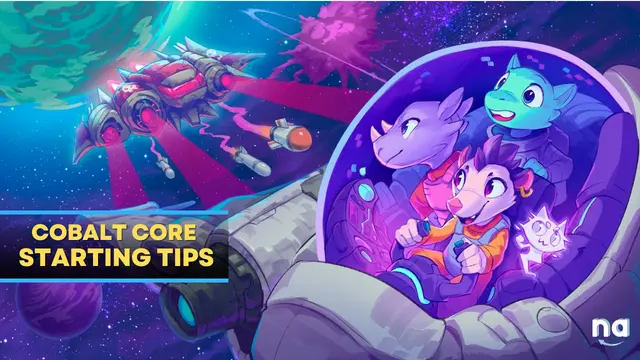Avoid the missiles, line up your cannons and launch them into the sky. If you’ve just started this adventure and need tips, you’ve come to the right place! In this Cobalt Core Starting Tips guide you’ll find the getting started tips you need!
This is the guide boarass it was created by. You can find the author’s link at the end of the guide.
Cobalt Core Starting Tips
The Cobalt Core Starting Tips guide below provides a quick explanation of the game’s basic mechanics. Look at the game’s mechanics and strategies, take a look at our guide.
Starting a Run
At the beginning of a run, you choose a ship and 3 crew. More on those below. After choosing your ship and crew, you choose one of three starting bonuses, making every run unique from the start. The three bonuses that you’re offered appear to be chosen at random from a pool, so it won’t be the same three offerings every time.
Ship
The ship determines your layout, some very junky starting cards, and your starting artifacts. Artifacts are passive upgrades that change the rules for the run in ways that (usually!) benefit the player.
Crew
The crew determine most of your starting deck, as well as what cards you can find during a run. For example, if you choose Dizzy, you will start with some Dizzy cards and can find Dizzy cards during a run. If you don’t choose Dizzy, then Dizzy cards will not be available during the run. Each crew member is also associated with several artifacts that you can find during a run only if you play with that crew member. Most artifacts, however, are “neutral” and can be found during any run.
Combat
In combat, you can see the enemy’s intentions, and your goal is to kill the enemy before it kills you. The simple innovation that makes Cobalt Core so magical is that enemy attacks don’t merely hit you in an abstract way. Enemies fire from their cannons, so if you move your ship out of the path of enemy fire, you dodge the attack.
Movement and Evade
You can move either by playing cards that provide move as en effect—for example, Peri’s starting card Lunge moves you two spaces to the right and then shoots—or by spending Evade. Evade is a consumable resource that you usually acquire by playing cards, and you can spend it any time during your turn to move your ship left or right.
Shields
Besides evading attacks, you can mitigate incoming damage through the use of shields. There are two types of shields: regular shields, which are blue, and temporary (temp) shields, which are pink. There is a limit to how many regular shields your ship can store. By contrast, there’s no limit to how many temp shields you can have, but any unused temp shields disappear the start of your turn. (In other words, if you gain temp shields during your turn and they’re not used up by the enemy’s attacks on the enemy’s next turn, then at the start of your next turn those unused temp shields will be lost.)
The Map
Outside of combat, you plot a route through each sector by choosing nodes. The node map is randomized in each run. Here’s a summary of the nodes you can encounter:
Basic Enemies
Blue skulls are basic enemies, which give a choice of 3 cards as a reward. If you’re familiar with deck-building games, you know that having more cards isn’t always a good thing: every card you add to your deck makes your other cards appear less often, possibly diluting the power of your deck. Thankfully, Cobalt Core lets you skip card rewards.
Elite Enemies
The purple skulls surrounded by triangles are elites, which are harder than basic enemies but give a choice of two artifacts as a reward in addition to a card reward. Artifacts are generally pretty strong, so going after the elite nodes is typically a good idea.
Repair Yards
The green nodes are repair yards, which allow you to either heal, upgrade a card, or remove a card from your deck. Each card has an upgrade A and an upgrade B, and you can preview upgrade options when looking at your deck by right-clicking on a card.
Events
The question marks are events, which can do a variety of things. Events generally give rather good rewards, but note that some of those rewards are locked behind a battle, making events slightly risky if you’re close to death.
Artifacts
The circular symbols are artifacts, which as mentioned above, change the rules of the game in some way. They are generally strong. Some of them provide a minor power boost, while others provide a major power boost alongside a drawback.
Bosses
The final enemy—a pink skull with a sword through it—is the sector’s boss. Killing the boss grants a boss artifact, which is usually stronger than a regular artifact but often comes attached to a more severe drawback. Killing the boss also increases your max hull and heals you for a bunch of hull, making health a usable resource as long as you don’t lose too much of it during the sector. Winning a run requires killing three bosses at the end of three sectors.
